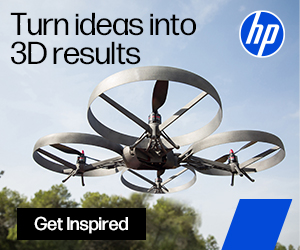What Does the Future Hold for 3D & 4D Printing? Reviewing Current Processes & Ongoing Potential
Researchers come together to review both 3D and 4D printing, as well as exploring its ongoing potential in ‘Recent 3D and 4D intelligent printing technologies: a comparative review and future perspective.’
While both technologies offer great opportunity for industrial users to make and maintain functional parts and prototypes, 3D and 4D printing are a source of fascination around the world due to the ability to innovate at will, cutting out the middleman, and making new objects with new materials that may not have been possible previously.
In the 4D realm, we see the progress being made from materials that may be less flexible to those that are able to shift with their environment—and according to the user’s needs. The authors not only delve further into fundamentals and development (especially in the evolution from 3D to 4D) but also perform comparative analysis regarding both forms of digital fabrication.
From the inception of 3D printing in the 80’s via Chuck Hull to its emergence in the mainstream and now integration into many fields—from robotics to tissue engineering, electronics, and more—the authors follow 3D printing, pointing out correctly that it is currently ‘still in the active stage of industrial innovation.’ Designers and engineers are able to take advantage of a wide variety of benefits—even including applications like fashion and jewelry.

General schematic overview of 3D printing technology with solid, liquid and power-based patterns (a) FDM; (b) SLS; (c) SLA (Sources: https://www.custompartnet.com)
While advantages such as affordability, accessibility, and greater efficiency in production are being enjoyed by many, there are still challenges regarding materials in applications like soft robotics and aerospace. With the ability to shift form while under pressure from temperature or moisture, 4D printed smart materials avail the user of greater flexibility and versatility.
“Compared to 3D printing, 4D printing updates the concept of change in the printed configuration over time, which relies on environmental stimuli. Therefore, 4D printed structures should be fully preprogrammed using time-dependent deformations of products,” state the authors.
4D printing relies on:
- Suitable hardware
- Stimulus-responsive material
- Stimuli
- Interactive mechanisms
- Mathematical modeling
Smart materials and the ability to deform and then return to their natural shape mean that 4D printing is suitable for not only for robotics but also self-repairing of materials like hydrogels, piping, and other materials which may be related to reusability and recycling.

The illustration of shapeshifting by self-folding using water absorption materials: (a) 1D to 3D41; (b) 2D to 3D41
While one of the obstacles in 3D printing is the general need to fabricate items with only one material, 4D printing is beginning to emerge as a forerunner in applications like the medical and engineering fields.

3D printed models in the medical area (a) 3D printed heart; (b) 3D printed skull (Source: https://3dprintingindustry.com/news; sketchucation.com)
3D printing is still becoming increasingly popular, however, for use in the military field, creating weaponry and allowing for better maintenance of parts. 3D printed models are improving treatment for patients and can be used as extremely helpful pre-planning devices for surgery. Various hardware has also been created for extrusion of food like chocolate and pancake batter.
As for 4D printing, the authors expect that it will be used to create more advanced smart materials that can transform environmentally as users require, offer ‘self-controllable functions,’ expand longevity in products, and promote greater complexity in structures.
What do you think of this news? Let us know your thoughts! Join the discussion of this and other 3D printing topics at 3DPrintBoard.com.
[Source / Images: ‘Recent 3D and 4D intelligent printing technologies: a comparative review and future perspective’]Subscribe to Our Email Newsletter
Stay up-to-date on all the latest news from the 3D printing industry and receive information and offers from third party vendors.
Print Services
Upload your 3D Models and get them printed quickly and efficiently.
You May Also Like
3D Printing Financials: 2024 Results In, Nano Dimension Gears Up with Markforged and Desktop Metal
Nano Dimension (Nasdaq: NNDM) is going through a major transformation. In just a few weeks, the company has finalized not one, but two major acquisitions: Desktop Metal and Markforged. On...
Velo3D Secures $22M Metal 3D Printing Powder Supply Deal with Amaero
Velo3D (OTCMKTS: VLDX) has signed a major new agreement with metal 3D printing powder manufacturer Amaero (ASX: 3DA). The five-year deal is valued at USD $22 million and centers around...
3D Printed Heat Exchanger Specialist Conflux Technology Expands into the UK
Melbourne’s Conflux Technology, a specialist in using additive manufacturing (AM) to produce heat exchangers, is opening a business hub in the UK. The new site, which will open sometime in...
Rob Higby: How Continuum’s Scrap-to-Powder Model Caught Siemens’ Attention
Continuum Powders has spent over a decade working on a bold idea: why mine new metal when high-quality material is already flowing through today’s factories as scrap? Now, thanks to...
































